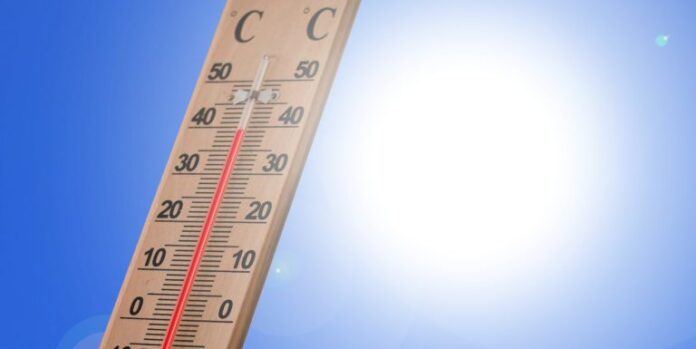If it felt unusually hot in the Kootenays on Monday, it’s because it was. According to data from Environment Canada, four temperature records were reached or broken on July 8 as the region faced its first heat warning.
The Cranbrook, Nelson, Castlegar, and Trail areas all reached above-average temperatures for this time in years on Monday afternoon, with Cranbrook matching its 2017 record high of 35.5°C.
The Nelson area surpassed its 2017 record of 35.7°C when it reached 36.4°C.
In the Castlegar area, it reached 38.8°C, beating its 1985 record high of 37.4°C, and the Trail area surpassed its 2017 record of 36.3°C when it reached 38.5°C.
A heat warning was enacted in the region this week, with Armel Castellan, Environment Canada Meteorologist, explaining that the high heat combined with more humidity in the air mass creates dangerous temperatures that pose a risk to the public.
However, he said fortunately there’s been a relatively dry air mass hovering over the region which is impacting how intense the high temperatures feel.
In the Nelson area specifically, the humidity index was measured at 27 per cent, which he said is quite dry and made the high heat feel tolerable.
“That’s why the temperatures don’t feel necessarily extremely muggy because there’s still a humidex value. For instance, at 11 a.m., the temperature was 29.5°C, but it actually feels like 32°C because the humidity is there. So there’s a pretty big difference between a humid air mass and a dry one.”
In order to classify a heat wave, temperatures must maintain a high of at least 18°C even at night.
The Cranbrook area was close to reaching that Monday night when it measured 17.4°C, which Castellan said may not have qualified as a heat wave but was close enough to issue a public safety announcement.
“If we’re that close to the heat warning criteria, then it is safe to issue this public safety announcement. This one is the first one of the season as we haven’t had very much heat, particularly for the Southern Interior for May and June. So this is kind of a large departure and a difference from the context with which we came from.”
He said the region can expect the heat to last for the better part of the week, and that by Saturday and Sunday temperatures should drop just below the heat warning criteria for the overnight and daytime highs.
“We will see a little bit of relief, but again 34°C during the day and 14°C overnight as we’re projecting for this weekend is still quite warm. People’s homes will likely still be kind of baked in. This is all the more reason for folks to understand that there is a moderate risk to society and human health.”
Wildfire outlook:
In terms of how the quick shift in temperatures from June to July has impacted the region’s moisture levels and wildfire outlook, Castellan said we are likely to see an uptick in wildfire activity.
While the Kootenay region was fortunate to experience significant precipitation in May and June, July’s projected heat will quickly cure soil moisture, with Castellan stating that it only takes about a week to 10 days of normal July temperatures to quickly expose drought codes.
“That curing happens extremely fast and all the evaporation of the subsurface happens really quickly and then we start to expose the drought codes, which is basically the deeper drought that is in the soil that’s present in our forests. This year we got lucky with May and June’s precipitation but now we’re off to the races, and it’s just a matter of time before humans or lightning start new wildfires and the impacts of that on the landscape.”
Something going on in your part of the Kootenays you think people should know about? Send us a news tip by emailing [email protected].




